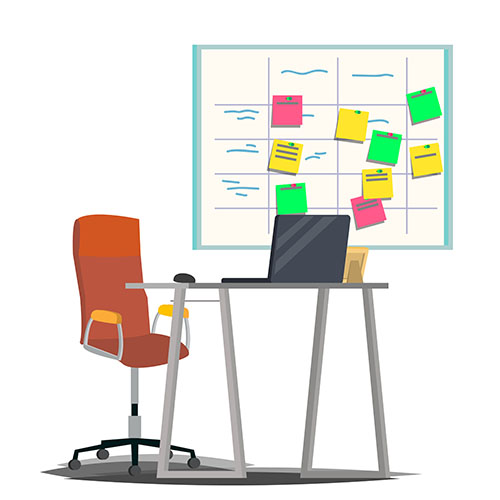I know, I know, the internet already has a million posts about agile and other management strategies, but there’s not a lot of meta advice about how to combine them in real life—especially for startups. Even if you’re a solo founder, incorporating agile ideas can keep you productive and pull you out of constantly putting out fires.
How to be a lean startup
First of all, successful startups have to be lean. This means more than just cutting bloat and cruft from your business. Being a lean startup is a state of mind and flexibility that allows you to quickly iterate, change tack when necessary and build on user feedback.
The best way to make sure that you’re running a lean startup is to build a lean canvas.
What being agile really is
Being agile isn’t just about dropping buzzwords or how you organize your day-to-day meetings. Adopting agile methods means that you are oriented towards results, iteration and constantly improving. The key idea is that you’re ready to change and pivot with each iteration based on feedback from the last one.

Even if you’re a solo founder and don’t plan to expand in the immediate future, Getting Results the Agile Way is a must read. Forget the buzzwords and hype and go straight for the meat.
- Results are the only thing that matter. Vanity metrics, ideas and products that aren’t released don’t count!
- Build on your daily, weekly and monthly wins.
- Evaluate your successes and failures to decide on your next steps.
- Iterate!
Agile + Lean
Creating a lean startup is all about results over meticulous planning and what should work on paper. In a lean canvas, the role of your MVP is to validate your initial assumptions. Even if you’re not producing revenue from day one, the feedback from your early adopters will give you the information you need to move forward as a company.
It’s all too easy to fall into the trap of treating constant business as if it were productivity. It’s not. Agile is one of the best ways to protect yourself from non-productive business. In a lean startup, you simply don’t have the time and resources for busy work.
Design thinking in startups
Another thought paradigm that founders can benefit from is design thinking. Once upon a time, design thinking was something of a new age sounding thing that wasn’t for serious businesses. Thankfully that reluctance is changing and even Harvard Businesses Review has hopped on the bandwagon.
In this case design isn’t so much about striking artwork and pretty pictures you can get them even with free tools like (for creating personalized logos) a logo maker and photo editor. Design thinking is all about user experience and taking into account how your customers will interact with your product from day one. This also includes your brand name, which can make a great first impression if you consider using a business name generator for inspiration.In this sense every startup founder has to be a designer—someone who cares deeply about how a user interacts with a product.
Much like agile, design thinking’s key idea is iterative development. Where design thinking differs from agile is the emphasis placed on UX. Agile goads you to get results, design thinking encourages you to be creative and develop empathy for your users.
Roughly speaking, the general outline of design thinking is to:
1. Research your users,
2. Define their problems,
3. Brainstorm solutions,
4. Build a prototype,
5. Test your prototype,
6. Implement the final version.
This handy guide to Design Thinking 101 is deeper introduction.
Startups as design thinking on a larger scale
Design thinking for a single product is like a startup in microcosm. That’s exactly why even big companies are turning to it—get the energy and freshness of a startup with the safety net and resources of an enterprise-scale company.

Going back to our lean canvas, the role of an MVP is to validate ideas using real user data. This is how you pivot from being a cool idea to either a profitable business or a company ready to look for investors. When it’s time to fund your startup, showing successful iterations, understanding your users and having a plan for the future—the basis of design thinking—will give you a huge leg up.
The common thread of agile, design thinking and lean startups
It goes without saying that you can’t build a startup without ha rd work. Agile provides the framework to make sure that your work is going towards tangible results rather than getting lost in some sort of Zeno-like paradox. Agile isn’t only for ironing chaos out of large organizations—a solo entrepreneur can benefit just as much by choosing the agile way.
Design thinking reminds you to always iterate and put the needs of the user first. When you stick to these core values, it’s possible to build a startup on a shoestring.
Research, empathize, build and iterate! That’s the path to making your lean startup agile.








